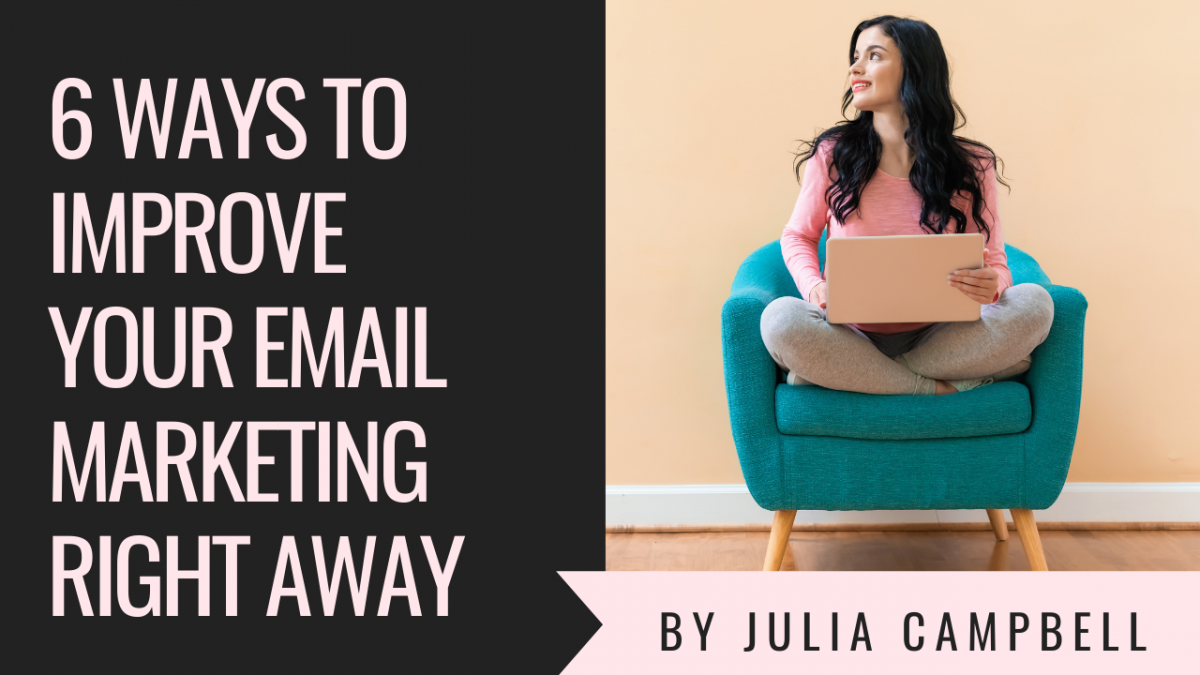Nonprofit email marketing continues to be a driving force of donations, advocacy, and participation actions for many nonprofits small and large.
With 91% of all US consumers checking email daily, email marketing should be a key element of your nonprofit’s marketing efforts.
Blackbaud found that on average, nonprofits receive donations from 18.4% of their email lists.
Some verticals see even more success – for example, health services and research reported a full 60% of their lists donating, while food banks and hospital foundations reported gifts from 28% and 24% of their lists. (Impressive!)
Campaign Monitor created an in-depth guide outlining nonprofit email marketing benchmarks based on billions of Campaign Monitor emails used in their original benchmarks research analyzing multiple industries.
Some of the key metrics found in their analysis of nonprofit email marketing campaigns:
- The average open rate is 20.39%.
- The average click-to-open rate is 12.99%.
- The average bounce rate is 1.09%.
(They also gathered tips and takeaways in this guide that can help marketers improve their nonprofit email marketing. Check it out here.)
In 2021, it is undoubtedly going to be even more difficult to stand out in the inbox, with email marketers in retail, sales, and business getting increasingly sophisticated and aggressive.
If you want to reach more of the people on your email list who have opted in and raised their hand to hear from you (that’s key), I have some advice.
Commit to exploring one or more of these 6 tactics to ramp up your email marketing, and you should see your open rates, engagement rates, and click-throughs improve.
1) Set up that welcome series!
This is the best way to get your brand new email subscribers excited, motivated, and active right off the bat.
And the more interested and engaged they are right away, the more likely they are to open future emails from you! (Makes sense.)
The first email that these newbie subscribers get from you is vital to setting the stage and setting up expectations from the get go.
Remember the old adage – You NEVER get a second chance to make a first impression!
I recommend starting the welcome series out with one or two introductory questions.
Asking for replies and responses in this first welcome email – the one that new subscribers are MOST likely to open – will help you in a handful of important ways.
First, you’ll get great intel and insight into what is important to them, in the language that they use.
Ask them what they hope to learn, how they first heard about your cause, what moves them about the work and the issue at hand.
When people hit reply and tell you what’s on their mind, email providers see this, and it will make your emails much more likely to be delivered in the future.
It also has the added benefit of building trust, because you are showing that you are accessible and open to feedback – and that you want to hear from your community.
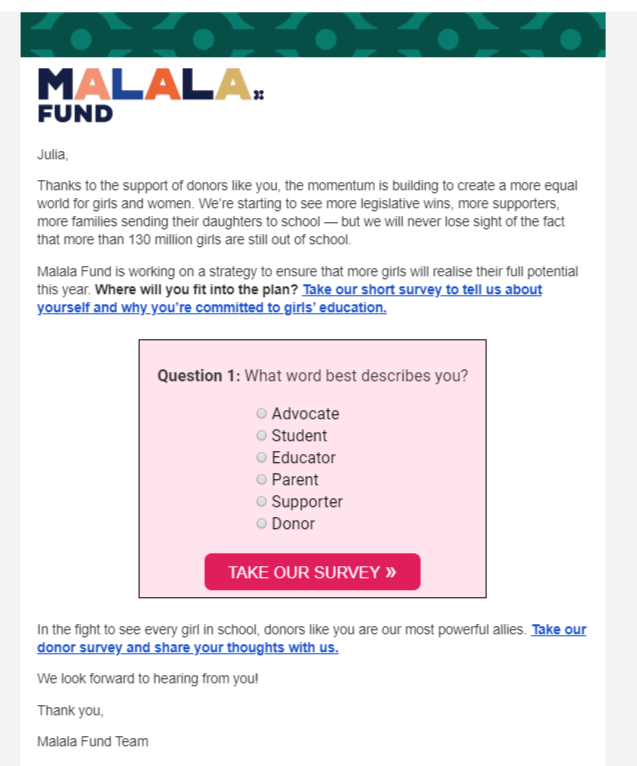
Malala Fund Donor Survey email

Welcome email Malala Fund
2) “Scrub” your email subscriber list.
Bounces, cold subscribers, spam bots, fake accounts – they all need to be purged regularly, or Gmail and other providers will mark your IP address as a spammer.
Once you get into Gmail jail, it’s incredibly difficult to recover.
If you don’t want to delete all of the “cold subscribers” immediately – cold being someone who hasn’t opened an email from you in 30-60 days – then consider a re-engagement campaign to make sure they are really not interested.
For more on cold subscriber re-engagement sequences and examples, click here to read a great article from HubSpot.
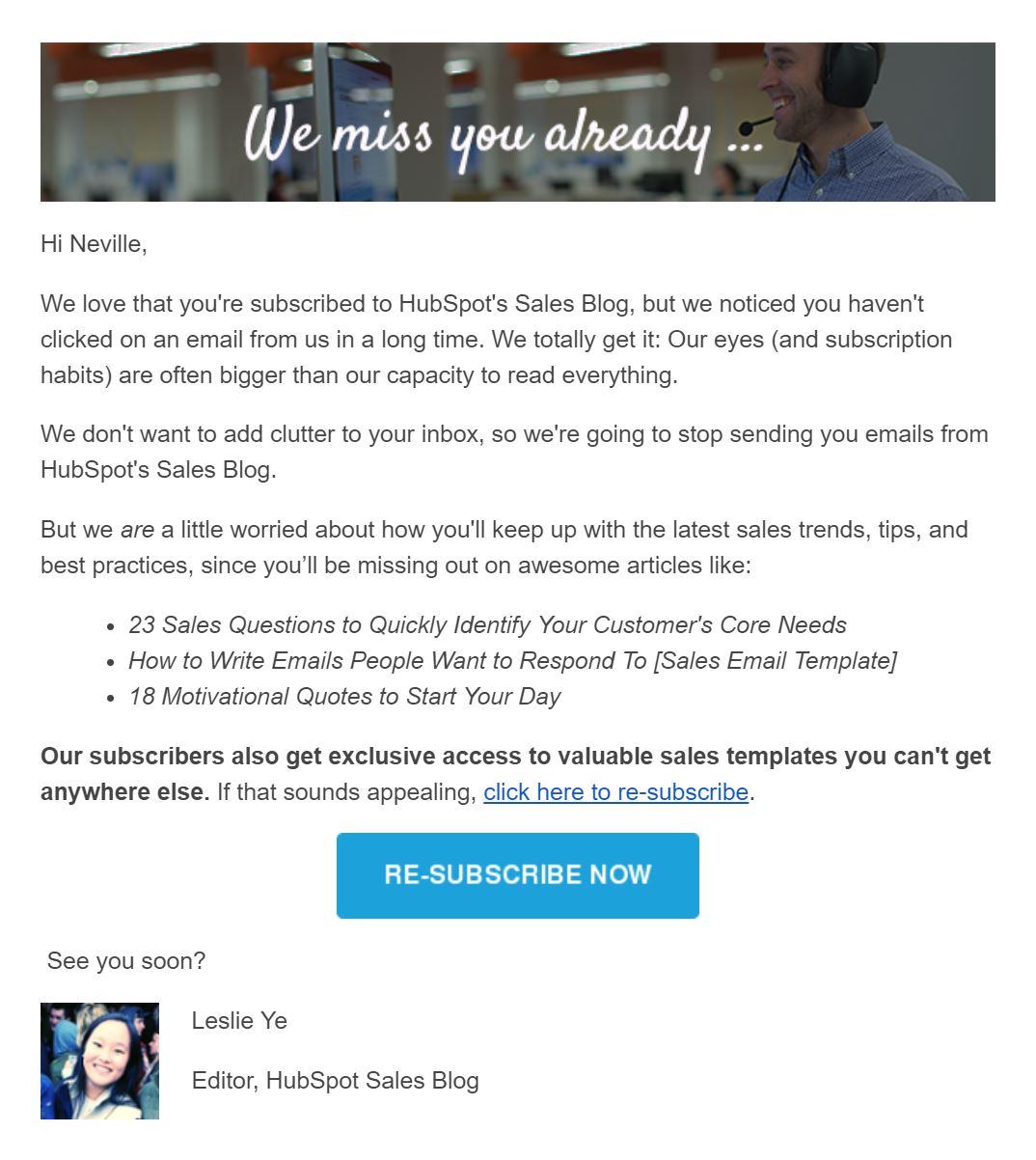
3) Work to improve deliverability.
Did you know that nonprofits annually lose an average of nearly $15,000 because of fundraising solicitations intercepted by spam filters, according to a study conducted by Every Action?
This means that one in eight nonprofit emails never reaches and inbox – a percentage almost as high as the amount of emails actually opened. (I just got shivers up my spine.)
To help increase deliverability, you can:
- Use a double opt-in to confirm subscribers, and only email to people who have specifically opted in to hear from you!
- Send your emails from a real email address connected to your nonprofit – i.e. julia@jcsocialmarketing.com – rather than donotreplyever@nonprofit.org
- In your first email to confirm their subscription, ask your readers to add you to their trusted address book/senders list.
- Regularly clean your list (see #3 above).
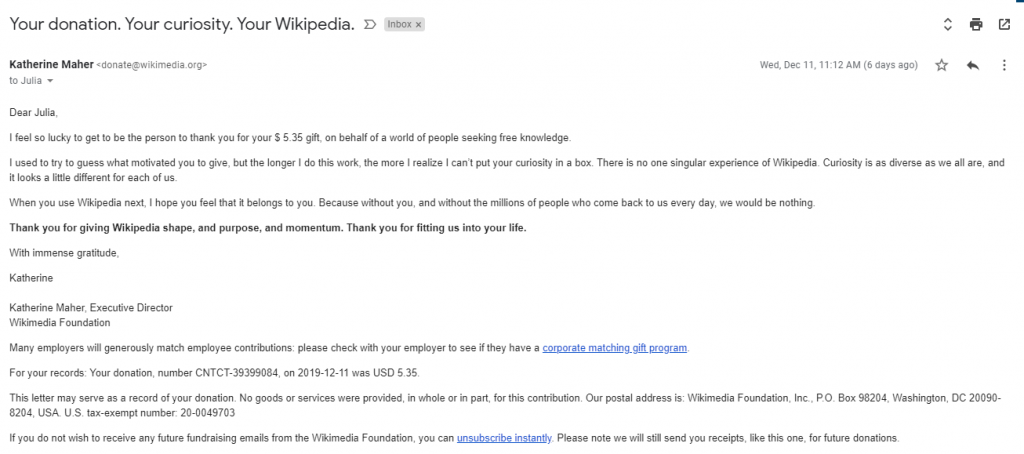
Simple, text only email can be very effective for open rates and deliverability
4) Send more emails.
Yup, you heard me! You need to send MORE emails to your subscribers to ensure that you are staying top of mind.
Imagine this – you send four email newsletters per year. I delete two of them.
This means when annual appeal time comes around, I have only heard from you TWO TIMES (assuming you aren’t communicating in other ways).
The answer is to send shorter emails more frequently.
Now I don’t mean sending anything you think of, or sending out crappy emails. Whenever you hit that send button, you need to be providing value to your supporters and subscribers.
Statistics show that sending four emails per month will improve your open rate more than if you send once per month or a handful of times per year.
Email has come a long way since we all started sending out those three column, image and graphics heavy email newsletter quarterly in the early 2000s.
One way to add value to your email is to keep it short, sweet, personal, and friendly.
Tell a story.
Have it be from a person.
Expert writer and superb newsletter-crafter Ann Handley recommends that you write for ONE person, rather than for many.
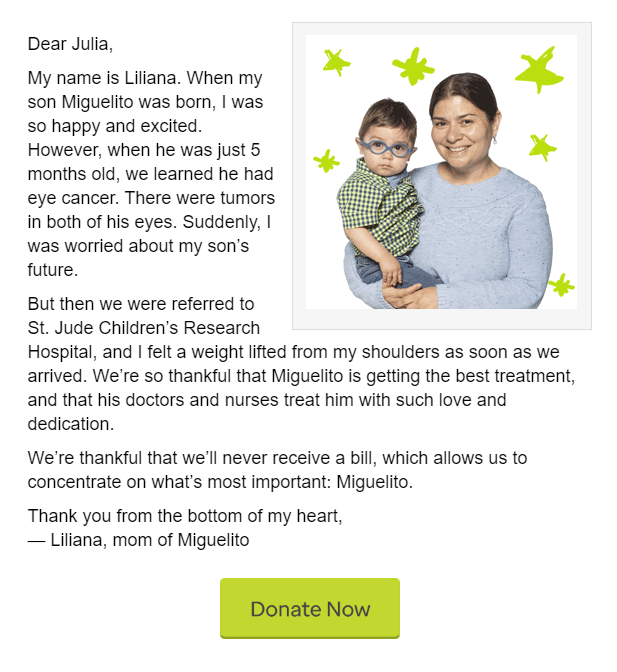
5) Optimize for mobile.
This one is fairly obvious.
61.9% of all emails are now opened and read on mobile devices.
And if an email is NOT optimized for mobile, your subscribers won’t wait to read it on their desktop. They will delete it.
This also means writing subject lines that can be easily read in the preview pane of a mobile device email app.
Retention Science found that subjects lines with 6-10 words have the highest open rate.
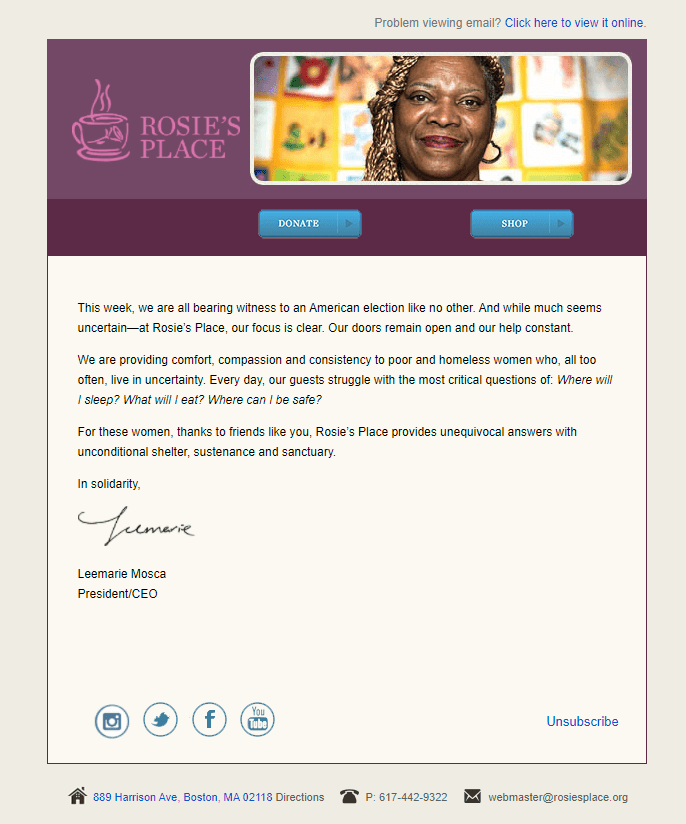
6) Break the email marketing rules.
There are best practices and “rules” that govern email marketing, but feel free to break them!
Surprise your email subscribers.
Don’t always send at the same time on the same day.
Use video.
Use photos.
Send a long, text-based email heavy on storytelling.
Measure, analyze, iterate.
Improve.
And always, always do what works best for your audience.
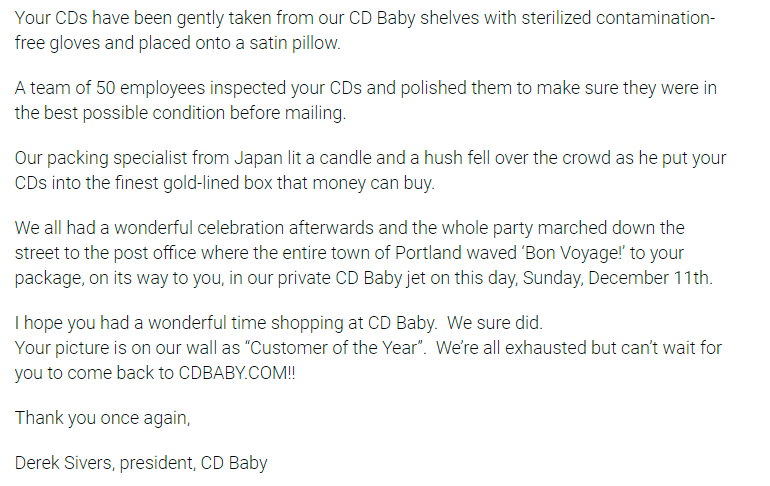
What are your best nonprofit email marketing tips?
How to Build Your Nonprofit Email List Using Your Website & Social Media

Your email list is essentially the communicative lifeblood of your nonprofit.
Okay, that was a little dramatic, but seriously, your nonprofit needs a robust and plentiful email list to continue engaging your community and garnering support.
But how does your nonprofit go about building this active email list, you might ask?
Via your nonprofit’s website and social media profiles of course!
J Campbell Social Marketing has partnered with Elevation to bring you this free guide to building your nonprofit email list, using the tools that you already have!
